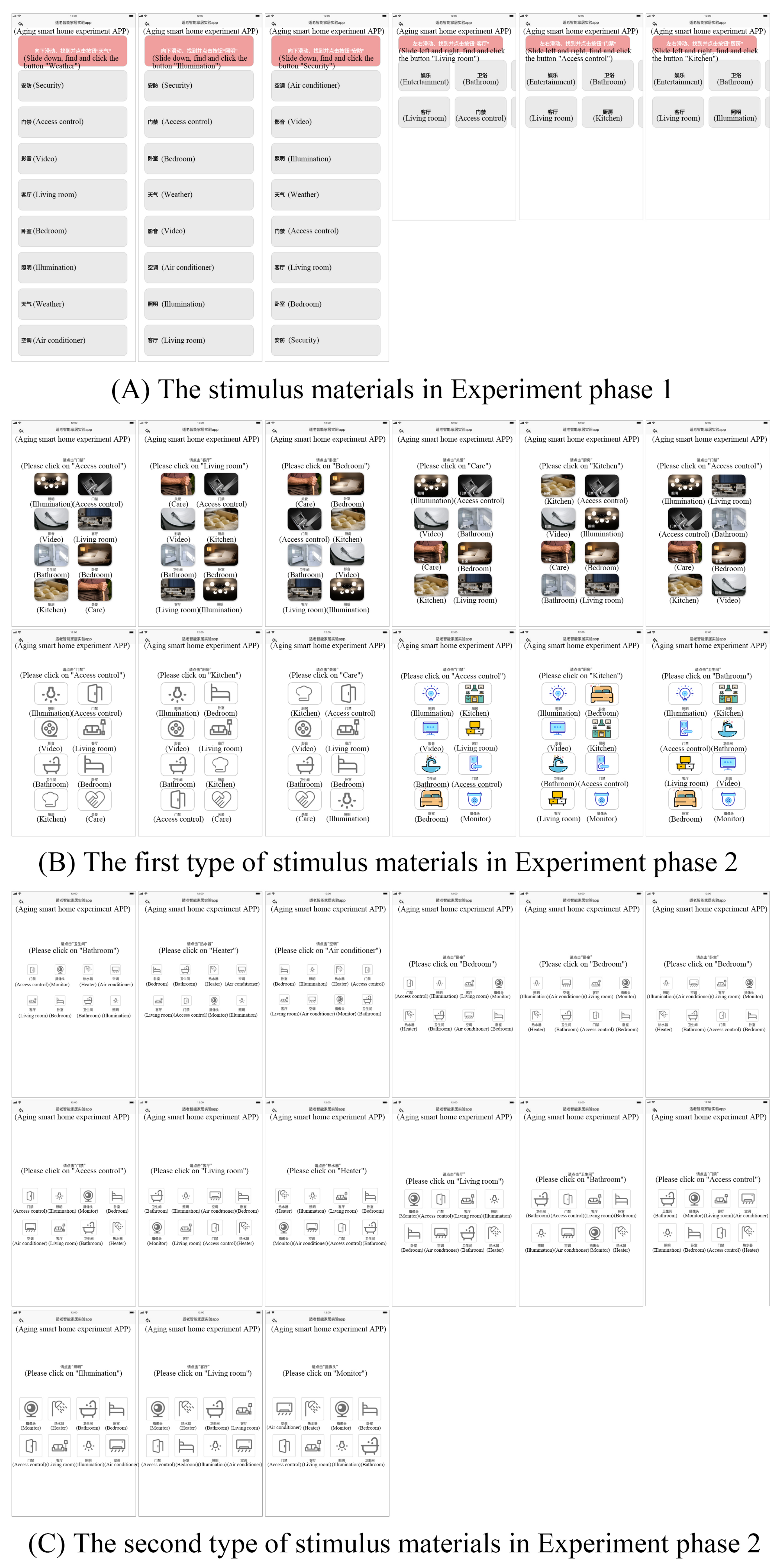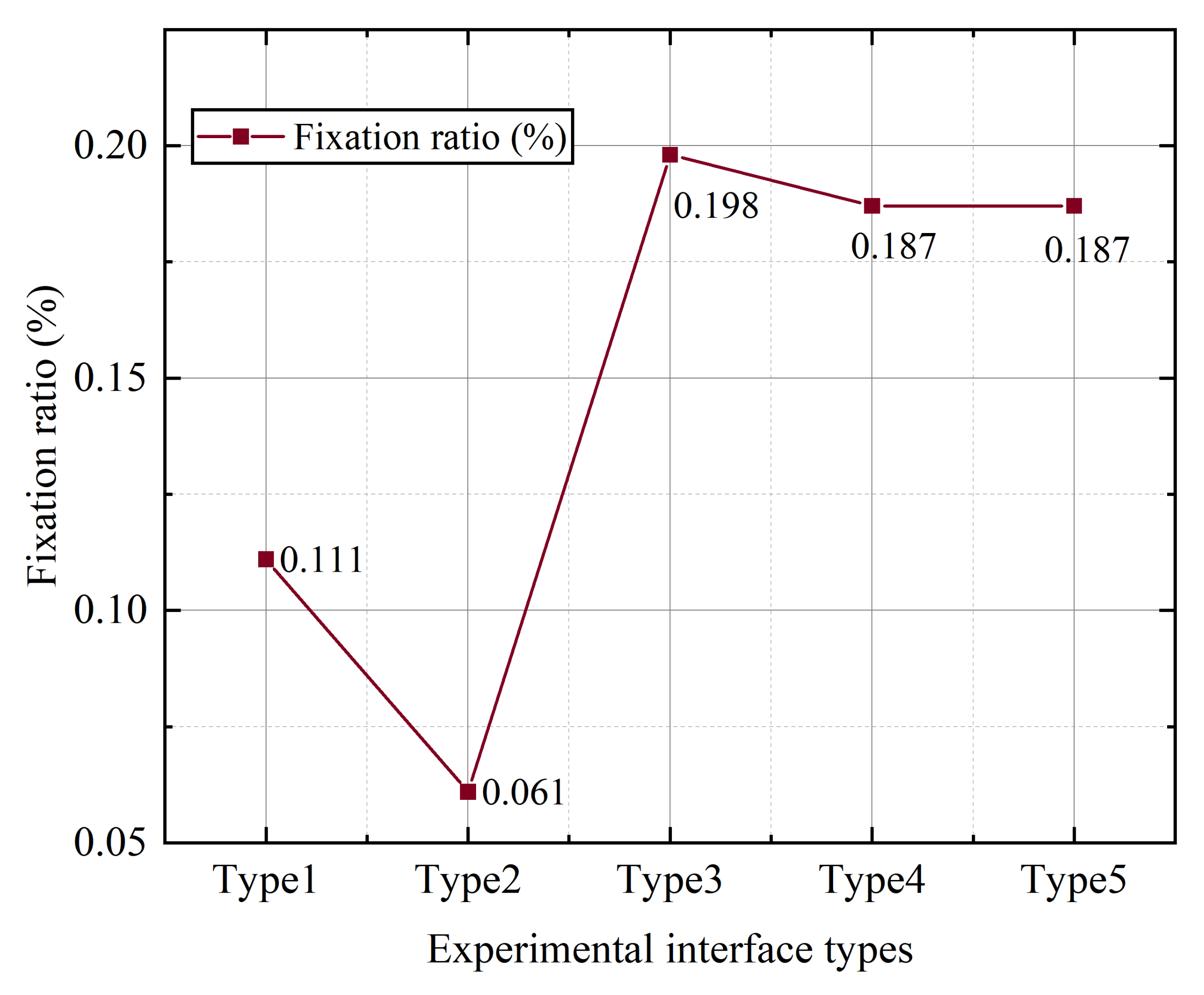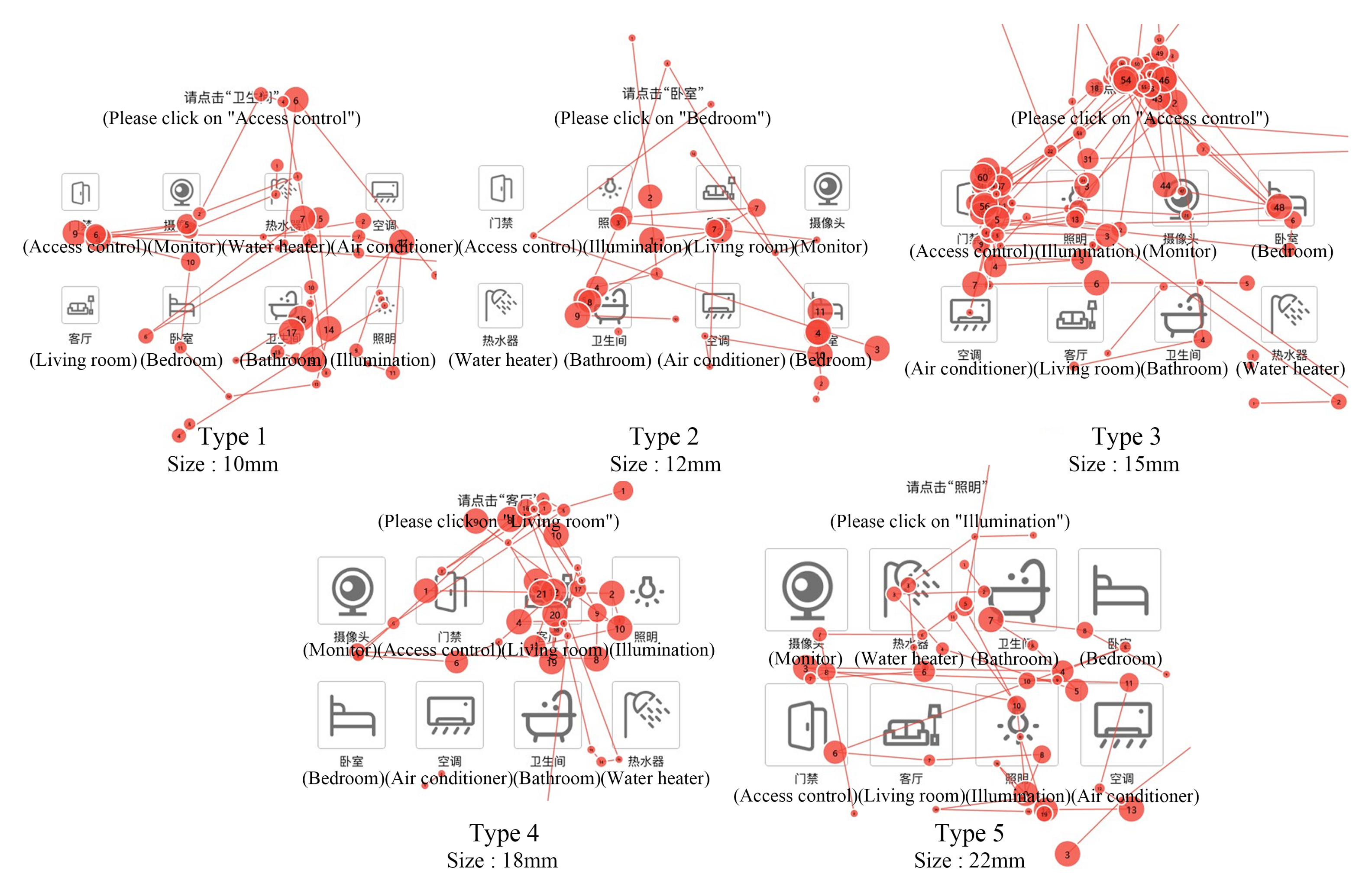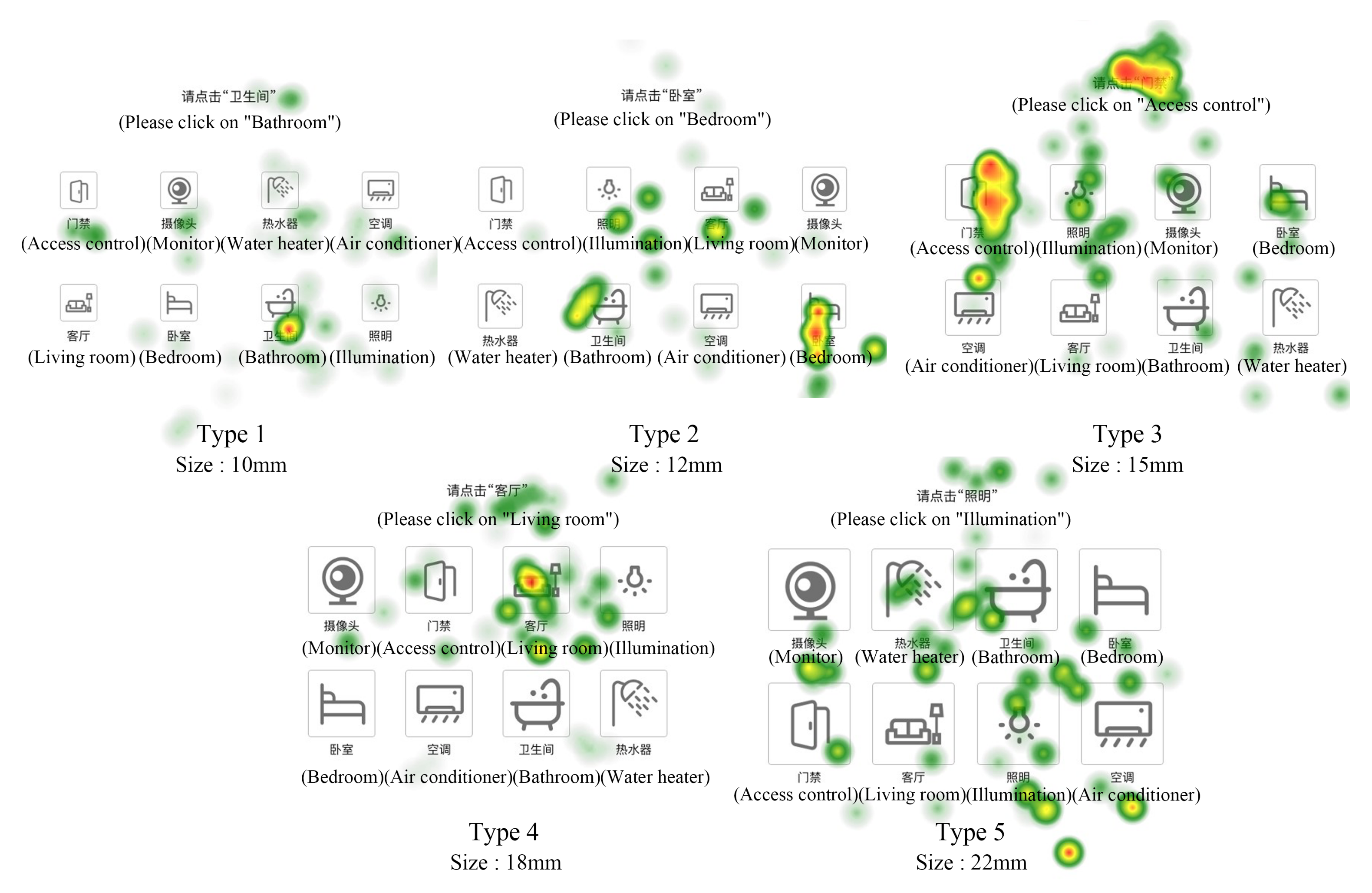1. Introduction
With the rise of the silver economy, the aging of the population, which affects the social and economic development of China, has gradually become a serious social problem that people are worried about, and the needs of the elderly are gradually brought to the attention of the market. The Ministry of Industry and Information Technology, the Ministry of Civil Affairs and the Health and Welfare Commission jointly released the “Action Plan for the Development of Intelligent Healthy Aging Industry”, which addresses the current situation of the increasingly rich and multi-level diversified aging needs of the elderly in modern society, and proposes to develop and innovate technologies, build data platforms and expand application scenarios to promote intelligent aging and healthy aging in China.
The research directions and contents of the foreign age-friendly smart home literature have focused on the following: research related to the use of sensors in smart solutions; implementation of remote access functions in smart home systems; research related to monitoring the elderly and manipulating devices through mobile rather than fixed devices; operational benefits of smart homes and output to smart scenarios; smart home design for specific characteristics of users research; and whether smart home design solutions have potential for direct application and the cost value of smart homes. Many foreign studies in this field involve smart furniture and home-related technologies, with a wide range of technologies and many in-depth and targeted studies, but the research content on age-friendly smart homes in China has limitations. Smart home research in China still focuses more on the technical aspects of smart home systems [
1], and lacks analysis of the adaptability of the system to the user and the environment. Regarding the elderly, our researchers primarily focus on care and intelligent monitoring, exploring the use of smart homes to achieve remote monitoring or biometric-based identification, bed departure monitoring, fall monitoring, etc., focusing on the safety and security of elderly life. However, less attention has been paid to how to make the life of the elderly more convenient and comfortable, how to interact with or control the devices or homes when using smart homes, and emotional and humane care. A smart home can provide users with convenient, comfortable and safe daily life [
2,
3]. The services provided by smart homes bring various conveniences and efficient life, but the welfare enjoyers are mostly young groups, and the elderly are not able to use smart products without barriers due to their lifetimes, environmental factors and their behavioral characteristics and psychological features. In addition to the factors of elderly user characteristics, smart home products themselves also have the problem of emphasizing appearance over technology and neglecting user experience, with cumbersome and inhumane operations and too many functions but not enough practicality [
4]. User experience and product usability are closely related to navigation design, the primary purpose of which is to help users find the desired information or complete the desired behavior or task. Efficient and straightforward navigation design guides users to the appropriate interface and leads to behavioral conversion [
5]. Age-friendly smart homes as a product of Internet of Things (IoT) technology to be widely deployed face the same barriers that are the main issues that smart homes have—privacy, energy consumption, obstructiveness, usability, acceptability and cost [
6,
7]. Emphasis on age-friendly smart home design is considered to be a crucial means to improve the quality of life and ensure the health and safety of the elderly [
8]. The General Office of the State Council issued a notice on the implementation plan to effectively solve the difficulties of using smart technology for the elderly, to let the elderly also enjoy the fruits of information technology development, starting from solving the difficulties encountered by the elderly when using smart technology so that the elderly can gain a sense of well-being in the information society. At present, the economic situation of the elderly in China and the national policy are very favorable to the development and application of smart home research, and in the future, age-friendly smart homes will develop in the direction of high practicality with flexible solutions, strong adaptability, low cost, ease of use, convenience and comfort.
In the field of interaction design, scenario interactive design (SID) focuses on how to focus on user behavior from different scenarios, and analyze the problems of the system based on user research results and update or rebuild new scenarios based on user value needs to achieve designs with usability [
9,
10]. Scenario-based design (SBD) refers to the user-centered design approach used in the early stages of the design cycle to capture the elements of human–product interaction through scenarios and stories. Rosson, Carroll et al. in 1998 described and analyzed the requirements in scenario-based design by considering the case studies development process [
11]. In 2000, Carroll proposed five technical challenges addressed by scenario-based IT design [
12]. In 2006, Robert Scoble convinced companies to embrace social media, then in 2013 proposed that social media, along with data, mobile devices, location technologies and sensors constitute the five converging forces, ushering in the era of scenarios. He discussed how technology can be the interface that connects people to their environment [
13]. SBD refers to a user-centered design approach used in the early stages of the design cycle to capture the elements of human–product interaction through scenarios and stories [
14]. HJ Kang in 2017 proposed smart services through four new dimensions, reflecting the characteristics of the smart service scenario framework, and also establishing an analytical framework for service experience based on traditional service scenarios and service blueprints [
15]. In addition, SBD is increasingly being used in medical and clinical fields abroad, such as the study by Mancilla on adolescent well-being and mental health in 2015 [
16] and Mohr on depression and anxiety in adults in 2017 [
17]. With the construction and expansion of national open innovation platforms, the development of new technologies, such as artificial intelligence has broadened the boundaries of scenario applications, and the concept of scenarios has provided a new perspective for the development of smart homes and caused changes in their scenarios, where technology and scenarios are integrated to make them better serve people.
Therefore, the purpose of this study is to match the smart home interaction interface with age-friendly scenarios. The touch screen interface is the most direct and common interaction method for smart home devices, and it is also a more intuitive and easier way to support human–computer interaction [
18]. In terms of recognizing commands and privacy, touch interaction has the highest accuracy rate compared to gesture and voice [
19]. Furthermore, voice interaction has the problem of dialect, making it less practical. To explore the factors affecting the interaction performance of the elderly user group, we analyze the best form of data information to enhance the interaction performance and user preference in three aspects—sliding method [
20], button size and button style [
21,
22]—to improve the interaction experience of elderly users using smart home and reduce the misoperation rate.
The experiment uses a scenario-based design approach, a smart scene panel as the interaction center, and a fusion of multimodal interaction to investigate both functional and visual perspectives based on the demand characteristics of elderly users [
23]. Integrating scenario theory with user research, we obtain user behavior, pain points, needs, demand priorities and design opportunity points by building objective scenarios, and finally transform them into age-friendly smart home system functions and an age-friendly interaction interface design, verify the usability and age-appropriateness of the design by building test scenarios, discover the shortcomings of the design, and make improvement iterations. Most of the available smart home systems are targeted at young- and middle-aged users, and the interface design and function design are not targeted at elderly users. Based on the results of this study, two special functions, namely scene prompting and scene presetting, are added to the smart home system design, which is not usually found in smart home interactive systems. However, these two special functions can significantly improve the satisfaction of elderly users. With the intelligent scene panel as the interaction center and the integration of multimodal interaction, the smart home system with practical functions, convenient operation, precise information, personalized recommendation, and warm care is designed according to the demand characteristics of the elderly users. The final designed smart home interaction system for the age-friendly scenario has such functions as highlighting daily information, pushing reminders by scenes, switching on and off scene modes with one key, environmental monitoring, displaying energy consumption reminders, and body data information. Current research on age-friendly interfaces explores the design of smart home systems for the elderly in terms of their needs and physiological characteristics of life. In 2011, Mayer et al. promoted interoperability and the widespread use of ambient assisted living (AAL) technology by providing an intuitive interface to increase market acceptance [
24]. In 2016, Byrne et al. explored whether design principles around AAL systems could be applied to the design of user interfaces for the elderly [
25]. In 2017, Gavril et al. proposed a multimodal interface for ambient intelligence and ambient assisted living environments using hand tracking and voice interaction [
26]. In 2014, Blasco et al. presented a new design, implementation and evaluation of a smart kitchen that provides ambient assisted living services; an intelligent environment that increases the autonomy of older people and people with disabilities in kitchen-related activities through contextual and user awareness, appropriate user interaction and artificial intelligence [
27]. In 2014, McNaull et al. introduced a multi-agent system that provides help and support to the person during the day through the ambient assisted living flexible interface (AALFI), while supplementing the nighttime help provided by NOCTURNAL with feedback help [
28]. In order to make the benefits of technological development also benefit the elderly users, and in order to ensure that the elderly have a good interaction performance and experience in the process of using smart home, this study is conducted from both functional and visual perspectives to ensure that the function meets the needs of the elderly and solves their pain points. Then the interface’s visual design meets the operation habits and subjective preferences of the elderly. This paper provides a new idea for the improvement of the user experience of an age-friendly smart home and can guide the design of a complete age-friendly smart home experience closed loop.
4. Conclusions
To solve the pain points of middle-aged and elderly users when using smart home products and interactive systems, reduce the impact of the “digital divide”, enjoy the benefits of technological development and create a comfortable and healthy smart living solution for them, the design of the smart home interaction interface should follow the design ideas of functionally solving the problems described in the objective scenarios and improving user interaction performance in the interface interaction. The principles of smart home interaction design based on age-friendly scenarios are that the overall design should be reasonable, fitting the characteristics of the target users and referring to the user model; the interaction operation should be efficient, reducing unnecessary interaction steps, making the design efficient, convenient and simple to operate; the interaction details should be unified, reducing user learning costs; the interface should be visually simple and intuitive with clear information; and in terms of personalized needs, it can be customized to meet different user. In this paper, we summarize three interface factors that are better for the age-friendly scenario based on the results of experiments and data analysis. In terms of sliding style, the up-and-down sliding layout interface has better interaction performance and subjective evaluation than the left and right sliding layout interface, so the smart home interface design should give priority to vertical layout and up and down sliding operation method; in terms of button style, line type simple button style has the best interaction performance and subjective evaluation, so the icon design should favor simple line style; in terms of button size, the interaction performance of function buttons is 12–18 mm. Therefore, the icon size should be 12 mm to 18 mm for the prototype design.
The design of the smart home interaction interface needs to follow the design ideas of functionally solving the problems described in the objective scenario and improving user interaction performance in the interface interaction. The smart home interaction design principles based on age-appropriate scenarios are as follows: overall reasonable design, fitting the target user characteristics and referring to the user model; efficient in interaction operation, reducing unnecessary interaction steps, making the design efficient, convenient and simple to operate; unified in interaction details, reducing user learning costs; simple and intuitive in interface visualization, with clear information; in terms of personalized needs, customizable to meet different users.
Originally, for different sliding layout methods, the objective data and subjective preference results are basically the same. The difference between the different sliding operation methods in subjects’ task completion time was not significant, but there was a significant difference in the number of clicks required before subjects completed the task (F = 20.22, p = 0.00), and the number of clicks for the up-down sliding operation and layout method (n = 3.57) was significantly less than that for the left-right sliding (n = 5.02), which means the user’s retrieval interaction in the up-down sliding operation method performance is higher. In terms of subjective preference, there is a significant difference between different sliding types for comfort, with the score of up and down sliding (5.00 points) being significantly higher than that of left and right sliding (4.15 points); there is a significant difference in time consumption satisfaction, with the score of up and down sliding (4.85 points) being significantly higher than that of left and right sliding (4.38 points), and the scores of both up and down sliding are higher than those of left and right sliding in terms of comfort and usability evaluation. In terms of comfort and usability, the scores of up and down sliding are also higher than those of left and right sliding. Therefore, the interaction performance and subjective evaluation of the up-down sliding layout are better.
Moreover, for different function button styles, there was a significant difference in the number of eye bounces by style type (F = 3.58, p = 0.002); the number of eye bounces was the lowest for the style type of monochrome lines (n = 5.78), and the number of eye bounces was the highest for the style type of dark physical pictures with light text (n = 8.57). In terms of scanning paths, the function buttons with dark physical images and light text performed better; the function buttons with monochromatic lines performed best in the hot spot analysis. In terms of subjective user preference, subjects thought that type 3 (function buttons with monochromatic lines) and type 4 (function buttons with colored lines) had good picture-assisted retrieval, and in terms of overall satisfaction, type 4 (function buttons with colored lines) scored the highest. The scores of type 1 (physical picture with dark text) and type 2 (physical picture with light text) were lower. During the subjective questionnaire, many subjects actively expressed that they disliked the style of type 2 the most and did not like dark images, preferring a brighter style. In addition, male subjects preferred monochromatic line icons and female subjects preferred colorful icons. In summary, the interaction performance and subjective evaluation of the line type minimalist button style were the best.
For different function key sizes, it was found that the subjects need the longest time (7.94 s) to complete the icon retrieval task of the interface with size type 1, which means a function key size of 10 mm, and the shortest time (4.65 s) for type 4, which means a function key size of 18 mm. As for the quality of decision-making, type 4 has high accuracy (0.94) and decision-making efficiency (0.25). There is no significant difference in the number of saccades among different size types; 18 mm interface is the highest proportion of AoI fixation duration (22.31%). The proportion of fixation points at 15 mm interface is the highest. In terms of scanning path, although the key size of 12 mm interface is not the largest, the scanning path is the best; through the hot spot map, it is found that the subjects with a 12 mm interface have the best eye movement performance. In conclusion, the interaction performance is better when the function key is 12–18 mm.
For the different functional button sizes, it was found that subjects took the longest time (7.94 s) to complete the icon retrieval task for size type 1, which means the interface with a functional button size of 10 mm, and the shortest time (4.65 s) for size type 4, which means the interface with a functional button size of 18 mm. Regarding the decision quality, both the correct rate (0.94) and the decision efficiency (0.25) were higher for type 4. There was no significant difference in the number of eye jumps among different size types. The 18 mm interface had the highest proportion of AoI gaze duration (22.31%) and the 15 mm interface had the highest proportion of gaze points. In terms of sweeping path, the 12 mm interface had the best sweeping path although the key size was not the largest. The 12 mm interface had the best eye movement performance as found by the hot spot map. In summary, the interaction performance is better when the function keys are 12–18 mm.
From the perspective of smart home interactive interface function realization, the conclusion of this experiment about the better interface data information improves the rationality of the age-friendly smart home interface and makes the smart home interface better cope with the age-friendly scenario.




















